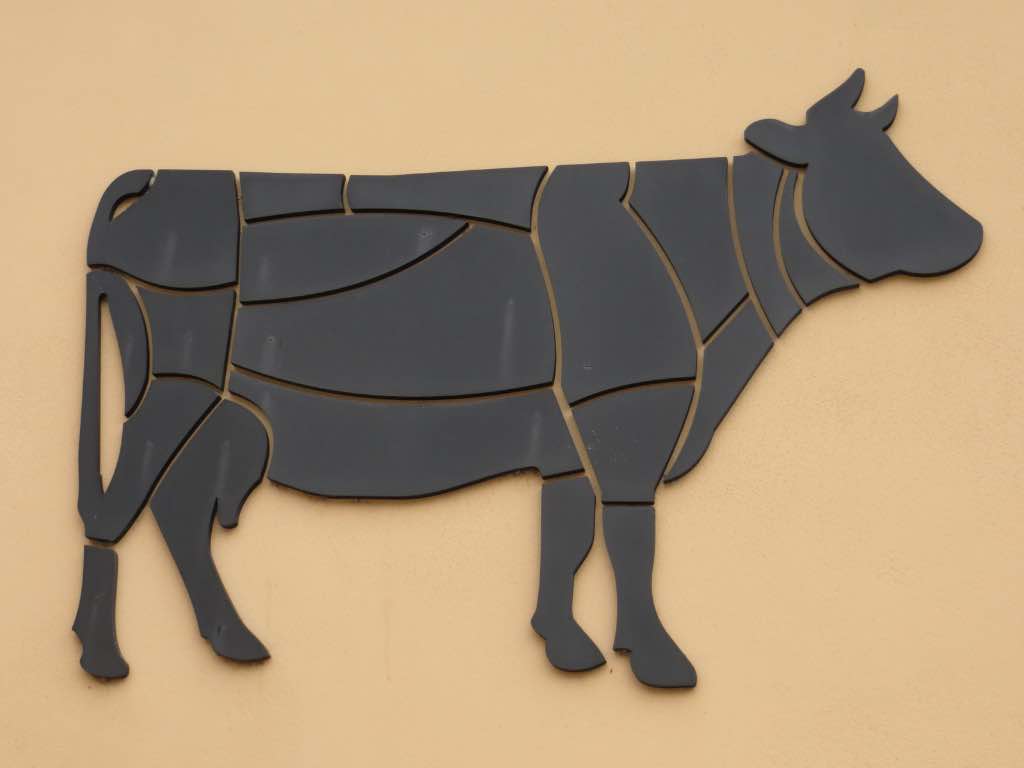
The Ultimate Beef Cuts Diagram: Understanding and Choosing
|
|
Time to read 5 min
Welcome to One Stop Halal!
Written by: Samir P.
|
|
Time to read 5 min
Beef, a staple in cuisines worldwide, offers a variety of cuts, each with unique characteristics and ideal cooking methods. Understanding these cuts can enhance your cooking skills and help you choose the best meat for your recipes. This blog will provide an in-depth look at beef cuts diagram, their locations on the cow, and how to cook them perfectly.
Before diving into specific cuts, it's helpful to understand the basic anatomy of a cow. The beef meat cuts diagram is categorized based on the animal's location and muscle usage. The primary sections include the chuck, rib, loin, round, and plate.
The chuck section is located at the front of the cow, encompassing the neck, shoulder, and upper arm. This area is well-exercised, resulting in tougher meat rich in flavor.
The rib section runs from the rib primal (located just behind the chuck) to the cow's upper back. This less exercised area leads to more tender cuts with a higher fat content.
The loin section is located at the cow's rear end, between the rib and the round. It's divided into two subprimals: the short loin and the sirloin. This area provides some of the most tender cuts of beef.
The round section is at the cow's rear and includes the upper leg and hindquarters. This area is well-exercised, resulting in lean but tougher cuts.
The plate section is located below the rib and extends from the rib primal to the flank. This area includes more flavorful but tougher cuts.
Selecting the proper cut of beef is crucial for achieving the best flavor and texture in your dish. Here’s a concise guide to help you choose:
Tender cuts with good marbling are ideal. Ribeye, New York strip, and T-bone steaks are excellent choices. Their fat content ensures juicy, flavorful results when grilled at high temperatures.
Tougher cuts that benefit from long, slow cooking include chuck roast, round roast, and brisket. These cuts break down during cooking, becoming tender and flavorful. They are perfect for braising, stewing, or making a hearty pot roast.
Look for flavorful but tender cuts that cook quickly. Skirt steak and flank steak are great options. They should be sliced thinly against the grain to ensure tenderness. Marinating these cuts can enhance their flavor and tenderness.
Choose more significant, tender cuts like prime rib or tenderloin. These cuts are well-suited for roasting in the oven, providing a rich flavor and tender texture. They benefit from a good seasoning and can be served with various sides.
Smaller, leaner cuts such as sirloin or eye of the round are ideal for quick sautéing. They cook quickly and are great for stir-fries or pan-seared dishes.
By understanding the characteristics of each cut and its best preparation method, you can make informed choices that suit your cooking style and desired outcome. Experiment with different cuts to find your favorites and enjoy delicious, perfectly cooked beef dishes.
Choosing the proper cooking method for each beef cut can significantly affect flavor and texture. Here’s a brief overview of the primary techniques:
Ideal for tender cuts like ribeye, T-bone, and New York strip. Grilling imparts a smoky flavor and a crispy exterior while keeping the inside juicy. Preheat the grill, season the meat, and cook over high heat for a short time. Flip once for even grilling, and use a meat thermometer to achieve the desired doneness.
This method is best for tougher cuts such as chuck roast, round roast, and brisket. It involves simmering the meat in a liquid (like broth) at a low temperature. This method breaks down connective tissues, resulting in tender, flavorful meat. Start by searing the meat to develop a crust, then simmer it in the liquid on the stovetop or in the oven.
Perfect for larger cuts like prime rib or tenderloin. Roasting involves cooking meat in an oven at moderate to high temperatures. Season the meat, place it in a roasting pan, and cook until it reaches the desired internal temperature. For even cooking, use a meat thermometer and let the meat rest before carving to redistribute juices.
Ideal for steaks like filet mignon and sirloin. This method involves cooking the meat in a hot pan with a small amount of oil. Sear the meat on high heat to develop a caramelized crust, then finish cooking it at a lower temperature if necessary. This technique is great for a quick, flavorful steak.
By matching the cooking method to the cut of beef, you can maximize tenderness and flavor, ensuring delicious results every time.
Welcome to the Home of the Halal Beef. We carry various beef cuts that are hard to find elsewhere. We deliver to your doorstep anywhere in the United States within 1-2 business days.
Cuts of beef diagram can significantly enhance your cooking experience, allowing you to select the right cut for your recipes and cook it perfectly. Whether you're grilling a juicy ribeye, slow-cooking a chuck roast, or stir-frying a skirt steak, knowing the characteristics of each cut will help you make informed choices and elevate your culinary skills. Experiment with different cuts and cooking methods to discover your favorites, and enjoy the rich, diverse world of beef!

© 2025 One Stop Halal, Inc.